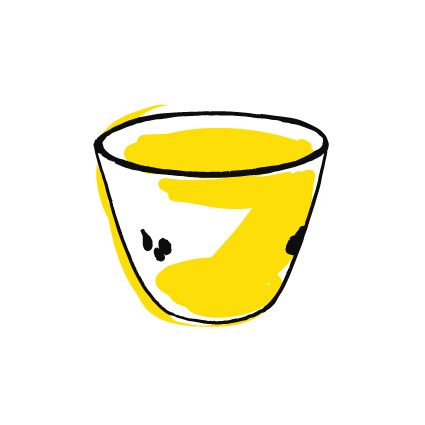
Kúpos, kisméretű üvegpohár. Kék pöttyökkel díszített. A forma és a díszítés jellegzetes a késő római korra, gyakran kerültek mellékletként sírokba. Ez a darab 1926-ban került elő, szőlőforgatás alkalmával. Tamás Gyula ajándékozta a múzeumnak, miután a földben homokkőből épített, alján habarcsos téglákkal kirakott gyereksírt talált. A rossz megtartású csontváz lábánál helyezkedett el a pohár, illetve a földben mellette néhány bronzpénz. Laczkó Dezső gyűjtötte be a leleteket. Az adattárban található leírás szerint a sír oldalait képező homokkő lapok még évekig ott álltak a találó telkén.
Római koros régészként nem csoda, hogy egy római darab áll közel a szívemhez a gyűjteményből. Az üvegfúvásos technikával készült pohár finom, nőies, mai napig szívesen inna belőle bort az ember. Amikor a Visegrádi Nemzetközi Palotajátékokon szembejött velem az egyik standon a replikája hosszasan nézegettem, kézbe vettem. Amikor már harmadszorra mentünk el két lányommal a stand előtt, és nehezen mentem tovább, nagyobbik gyerekem kifakadt: „Anya, vedd meg! Ha itt hagyod, bánni fogod!” Így Visegrádról már egy római üvegpohárral gazdagabban tértünk haza. Amellett, hogy a polcon áll, gyakorlati szerepet is betölt: ha gyerekeknek kell beszélni a római korról mindig elviszem, hiszen így a műtárgymásolatok segítségével kézbe fogható a történelem.
Péterváry-Szanyi Brigitta
régész
Erre haladjon tovább:
A mellettünk lévő fekvő vitrin Bacchusa a következő állomás.
Small, conical drinking glass decorated with blue dots.This shape and decoration are typical of the late Roman period, similar items were often used as grave accompaniments. This piece was found in 1962, during the tilling of a vineyard. The item was gifted to the museum by Gyula Tamás after he found a child's grave made of sandstone, its base lined with bricks set in mortar in the ground. The glass was located next to the legs of the poorly preserved skeleton, along with some bronze coins. These archeological finds were collected by the Laczkó Dezső Museum. Based on the descriptions found in our database, the sandstone slabs that made up the walls of the grave were not relocated from the owners property for decades.
It is not a surprise, that as an archeologist whose speciality is the Roman period, it would be a Roman era item that is the closest to my heart from all of our collections. The drinking glass was made with glass blowing technique. It has a delicate, feminine form, even today, one would gladly drink wine from it.
When I found a replica at the Visegrád International Palace Games, I spent a long while looking at the glass as I held it in my hands. By the time we went by the stand that was selling this replica, I was hesitant to move along. That was when my oldest daughter burst out: “Mom, just buy it! If you leave it here, you will regret it!” And this is how we left Visegrád with a roman drinking glass. Besides just standing on the shelf, it also has a practical purpose, whenever I give a presentation for children about the roman period, I bring this glass with me. This way, with the help of artifact replicas, our history becomes tangible.
Brigitta Péterváry-Szanyi
archeologist
Proceed to this:
The Bacchus that you can see in the horizontal display case next to you, is our next destination.